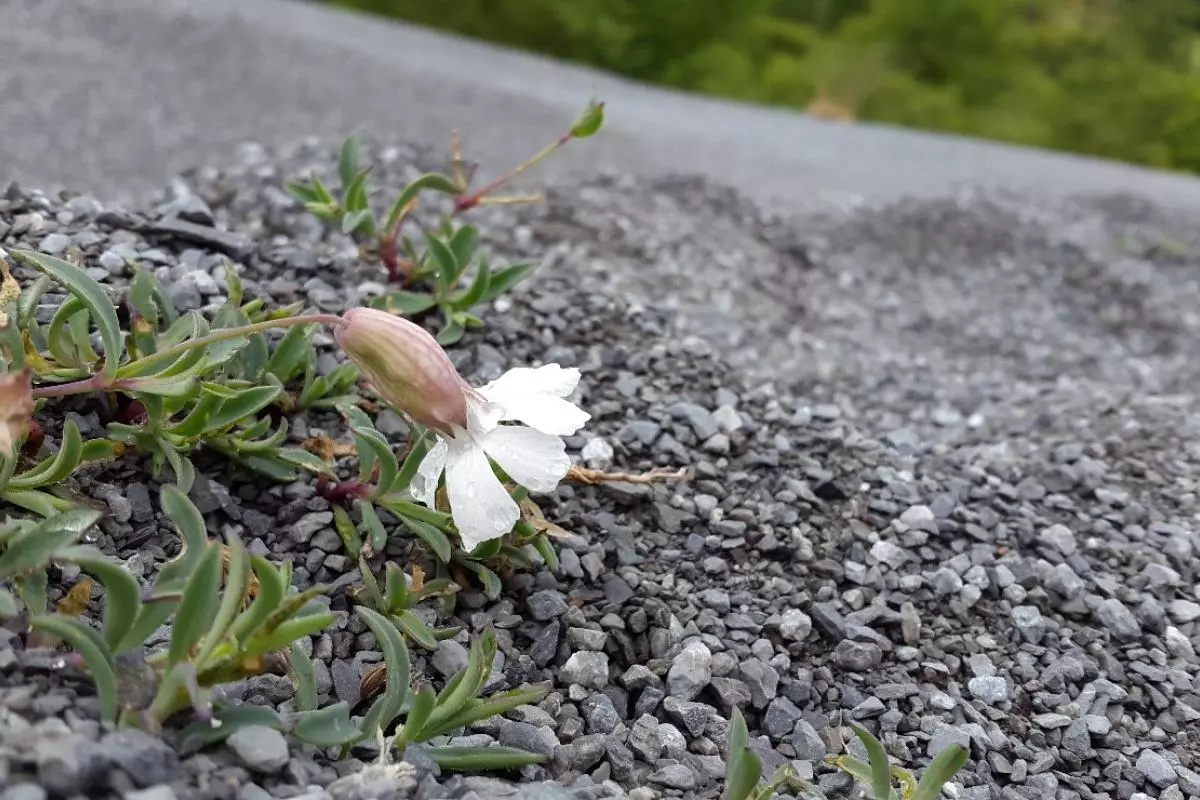The rate of environmental change is exceptionally hard for wild organisms. Individual plants and animals can adapt their biology to effectively cope with new pressures when confronted with a new environment; this is known as phenotypic plasticity.
 A sea Campion seen against a gritty backdrop. Image Credit: Bangor University
A sea Campion seen against a gritty backdrop. Image Credit: Bangor University
Plasticity is most likely to be important during the early stages of colonizing new areas or when subjected to toxic substances in the environment. According to new research published in the journal Nature Ecology & Evolution, early plasticity can impact the ability to eventually evolve genetic adaptations to conquer new habitats.
Sea campion, a coastal wildflower native to the United Kingdom and Ireland, has adapted to toxic, zinc-rich industrial-era mining waste that destroys most other plant species. Zinc-tolerant plants evolved several times from zinc-sensitive coastal populations in different locations.
A group of scientists guided by Bangor University carried out experiments on sea campion to better understand the role of plasticity in rapid adaptation.
As zinc-tolerance has evolved several times, the researchers were able to investigate whether ancestral plasticity increased the likelihood that the same genes might be used by different populations subjected to the same environment.
The scientists were able to see how plasticity in the coastal ancestors has laid the groundwork for adaptation to occur very quickly by subjecting the tolerant and sensitive plants to both benign and zinc-contaminated environments and assessing changes in the expression of genes in the plant’s roots.
Sea Campion
Sea campion usually grow on cliffs and shingle beaches, but mining opened up a new niche for them that other plants weren’t able to exploit. Our research has shown that some of the beneficial plasticity in the coastal plants has helped the mine plants to adapt so quickly.
Dr. Alex Papadopulos, Senior Lecturer, Biology (Molecular Ecology), Bangor University
Dr. Alex Papadopulos adds, “Remarkably if a gene responds to the new environment in a beneficial way in the ancestral plants, it is much more likely that that gene will be reused in all of the lineages that are independently adapting to the new environment.”
Phenotypic plasticity may make it more likely that there would be the same evolutionary outcome if the tape of life were replayed. If we understand the plastic responses that species have to environmental change, we may be better equipped to predict the impacts of climate change on biodiversity.
Dr. Alex Papadopulos, Senior Lecturer, Biology (Molecular Ecology), Bangor University
Journal Reference:
Wood, D. P., et al. (2023) Genetic assimilation of ancestral plasticity during parallel adaptation to zinc contamination in Silene uniflora. Nature Ecology & Evolution. doi.org/10.1038/s41559-022-01975-w.